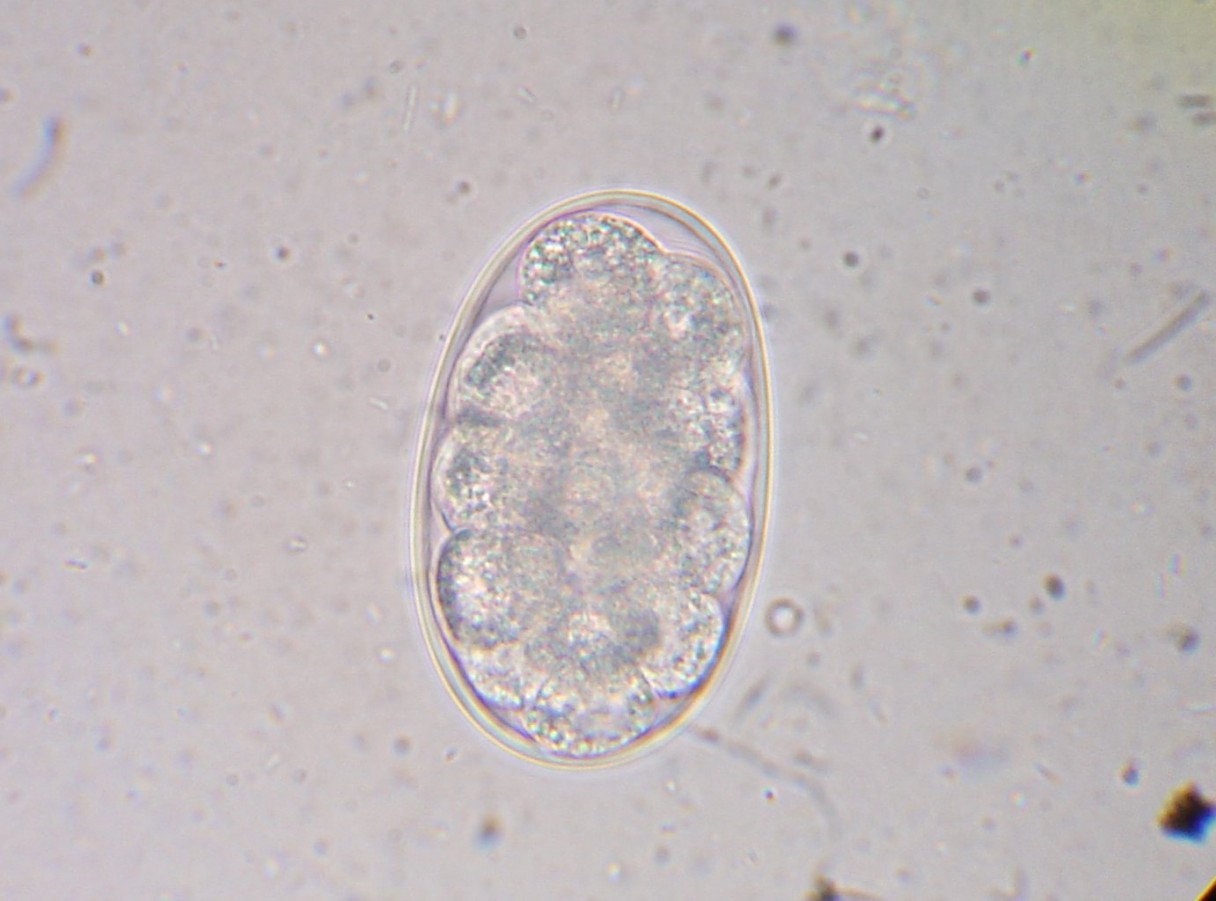Parasites are unpleasant, and hookworms are no exception. These nasty little worms can do a lot of damage to your dog, which is why it is important for owners to be aware of the symptoms of hookworms in dogs and how to treat them. Here is what you need to know.
What Are Hookworms?
Hookworms in dogs, scientifically known as “Ancylostoma caninum” or “Ancylostoma braziliense,” are intestinal parasites that literally hook themselves into the lining of your dog’s intestines. They are named for their hook-like mouthpieces, which they use to attach themselves to the intestinal wall and to feed off of the tiny blood vessels in the intestinal lining. Despite their small size, only 3 millimeters in length, this feeding practice can lead to severe anemia.
The life cycle of the hookworm has three stages: egg, larvae, and adult. The microscopic eggs pass through the feces, where they hatch into larvae and contaminate the environment. The larvae can survive for weeks or even months before infecting your dog. The larvae then migrate through the dog’s body until they come to the intestine, where they mature into adults and lay eggs, perpetuating the cycle.
 Centers For Disease Control and Prevention/Wikimedia
Centers For Disease Control and Prevention/WikimediaWhat Causes Hookworms in Dogs?
There are four ways dogs can get this unpleasant parasite:
- Oral ingestion
- Direct contact with the skin
- In utero
- Through the bitch’s milk
Dogs accidentally ingest the larvae by sniffing or eating contaminated soil or feces. They can also ingest larvae by grooming their paws or by drinking contaminated water, and larvae can burrow into the skin of unsuspecting dogs if the dog lies on contaminated soil.
Mothers pass lots of good traits on to their pups. They can also pass along hookworms. The larvae infect the puppies either in the uterus or through the bitch’s milk when the puppies nurse. This is concerning, as hookworms can lead to severe anemia in puppies, which can be fatal.
Symptoms of Hookworms in Dogs
As with most diseases, catching hookworms early can save your dog a lot of discomfort. There are several symptoms of hookworms in dogs that owners should be aware of to help them catch an infection before it becomes a problem. These symptoms include:
- Anemia
- Pale gums
- Weakness
- Weight loss
- Bloody diarrhea
- Itchy paws
- Poor growth
- Death
These symptoms could also be a sign of another illness, so make sure you call your vet if you notice any or all of these symptoms in your dog.
Diagnosing Hookworms in Dogs
 Joel Mills/Wikimedia
Joel Mills/WikimediaIf your vet suspects that your dog has hookworm, he or she will perform a diagnostic test called a fecal float to look for hookworm eggs. This test is generally a very reliable method of detecting hookworms, as the parasite produces large numbers of eggs on a daily basis. The test is sometimes less reliable in very young puppies, as it takes two-to-three weeks for the larvae to mature and produce eggs, so talk to your vet about deworming protocols that can help prevent a hookworm infection in litters.
Treating Hookworms in Dogs
Treating hookworms in dogs requires the intervention of a veterinarian who can prescribe your dog with a dewormer, or anthelmintic. These drugs are usually oral and come with few side effects, but they only kill the adult hookworms. This means that your vet will probably recommend treating your dog again in two-to-four weeks to eliminate any new adults that formed from the surviving larvae. In rare cases, your dog might require a blood transfusion to help combat severe anemia.
Preventing Hookworms in Dogs
Preventing reinfection is a key part of treating hookworms. Since the eggs pass through the feces, it is crucial that owners clean up dog poop immediately, before the larvae have a chance to infect the environment. Unfortunately, there is no approved product on the market to remove larvae from yards, so talk to your vet about adding a heartworm preventative that protects against hookworms to your dog’s preventative care plan, while you wait for the hookworm larvae to die.
Hookworms thrive in moist, warm environments like overcrowded kennels, which is why proper kennel hygiene, like cleaning up after dogs and disinfecting runs and yards, is so important. Avoid taking your dog to facilities that don’t follow standard kennel protocols, and avoid areas where there are large amounts of dog feces on the ground.

Hookworms in puppies are preventable. Talk to your veterinarian about establishing a deworming schedule for pregnant bitches and newborn puppies.
Can Humans Get Hookworm?
Perhaps the most concerning aspect of hookworms in dogs is the potential for human infection. While adult hookworms cannot infect humans, the larvae can burrow into the human body. Lying on infected soil can allow hookworm larvae to burrow under your skin, which causes uncomfortable itching and is commonly referred to as “ground itch.”
Hookworms in humans can be dangerous. The migrating larvae can penetrate and damage internal organs and eyes, causing blindness and complications. Luckily, these conditions are rare and can be avoided by preventing contact between skin and moist, hookworm-infected soil. Bathing and washing your hands regularly can help prevent infection.
Preventing parasites is an important part of responsible pet ownership. Knowing the symptoms of hookworms in dogs and how to prevent hookworms will help keep your dog happy, healthy, and hookworm-free. For more information about hookworms, or if you suspect that your dog has a hookworm infection, talk to your veterinarian.

